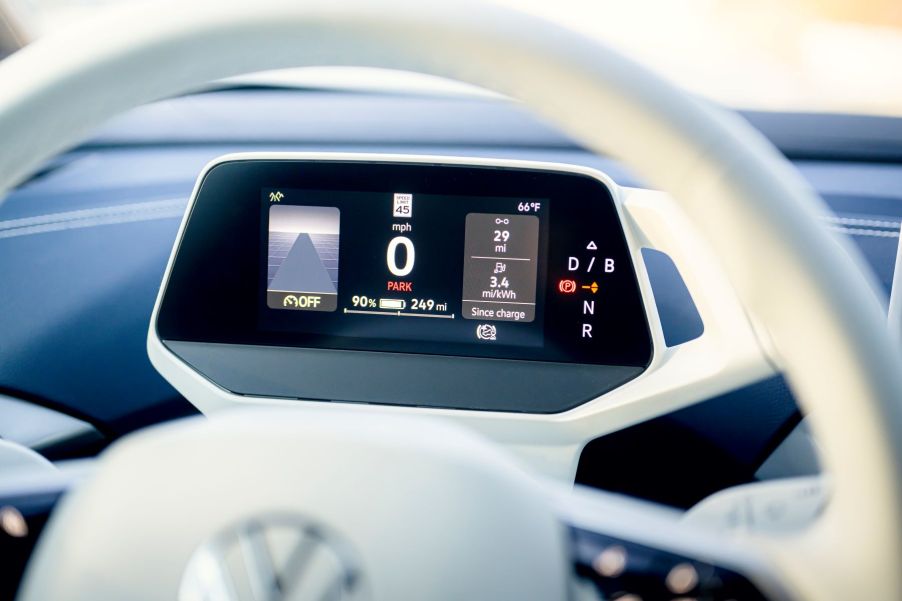
3 Reasons Why EVs Get Worse Fuel Economy on the Highway Compared to the City
Driving an EV comes with many advantages compared to a gas-powered car, and the most obvious advantage is that EV owners don’t have to pay for gas anymore. That said, while EVs are usually very efficient vehicles, there are some differences in energy efficiency compared to a car, and a big difference is where they’re strongest. Gas-powered vehicles tend to have better fuel economies on highways than in cities, but EVs are the opposite. Electric cars tend to get worse fuel economy on highways compared to the city, and here are three reasons why that is.
1. EVs have regenerative braking and this is great for city driving
Regenerative braking is an excellent feature common in EVs, but technically speaking, a gas-powered car can use it too. The idea behind it is simple. When a vehicle is moving, it has a lot of kinetic energy. When you put your foot on the brakes, that kinetic energy turns to heat and is wasted. However, regenerative braking converts some of that kinetic energy into power for the car’s battery.
This feature is great for city driving, as city driving often involves stop-and-go traffic. City driving also involves a lot of stop signs and stop lights, and that’s where regenerative braking can recover some range for an EV. This also means that, on highways, since cars are typically not stopping, regenerative brakes don’t matter as much. As a result, regenerative brakes benefit an EV’s city driving fuel economy, but not its highway fuel economy.
2. An EV gets instant torque from its single gear, and that’s not efficient

Another reason EVs are less efficient on highways comes down to how EVs have a single gear, which allows the EV to get instant torque. This is good for folks who want their EV to accelerate very quickly, but instant torque is not a great thing for efficiency. This is especially true for places like entrance ramps on highways, as an EV’s instant torque wastes a lot of energy going up or down that ramp as it accelerates to a high speed in a short time.
As Autocar India wrote, the single gear that automakers choose is typically a balance between city and highway driving, so the car isn’t as efficient as it could be in either case. In the future, EVs could be more efficient if automakers add a second gear to the car so drivers can use the most efficient option. However, an extra gear will cost more and add extra weight to the vehicle, so there’s no guarantee that automakers will go for this option.
3. Wind resistance hurts an electric car’s efficiency at highway speeds
On top of that, according to Torque News, wind resistance is another big factor that can hurt an EV’s fuel efficiency at high speeds. This has to do with physics, as wind resistance gets higher when something is moving faster. As a result, EVs will lose some range on the highway if the driver is driving at around 75 mph compared to slower highway speeds, such as 55 mph.
This issue doesn’t affect city driving, as most folks are driving at speeds below 55 mph when they’re in the city. However, there’s another wind-related issue, and it has to do with headwinds. A headwind means wind that is blowing against the car, and this makes it less efficient overall. When combined with highway speeds, an EV’s fuel economy does much worse than its city fuel economy.


